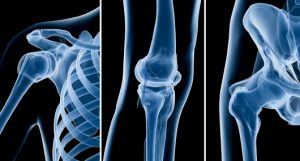The quick and consistent rise of robotics utilization in the operating room has opened a floodgate of potential for the orthopedic health industry. Now, many of the industry’s leaders, like Zimmer Biomet and Stryker, are looking for ways to analyze and configure the patient data that has been collected in recent years, in hopes of creating lasting standards for practice and procedure.
Data has been drastically accumulating as more and more operating rooms have converted to robotic procedures. This data is generally collected from patients before and after their operations, as well as from the robots themselves, which gather information while operating. This treasure trove of information has the potential to help many companies improve favorable patient outcomes as well as adjust current systems of operation to aid efficiency.
Stryker’s Mako system, which was designed for performing knee and hip replacements, collects information during surgery about implant positioning and allows surgeons to examine how patient anatomy contributes to placement success. This collected data in long-term applications has also helped healthcare professionals identify which implants have higher success rates with specific patients.
Zimmer also has an orthopedic surgery system, called Rosa, which specializes in full and partial knee replacements. The company has taken their data collection a step further, by partnering with Apple, to create an app which collects follow-up information from knee replacement recipients. The app accesses data from Apple iWatch interfaces, to monitor things like step and stair count as well as heart rate and breathing frequency. This information, once analyzed, can provide valuable insight into how quickly and effectively patients recover, and which steps can be taken to maximize success with patients in the future. Zimmer even revealed, last November, that their continued clinical trials which utilize this follow-up data collection have already resulted in a drop in outpatient physical therapy visits.
To take data-collection even further, both companies are now diving into the realm of smart implant technology, which would allow them to collect data long term, and compare it with previously collected analytics to ensure the durability of their hardware years down the line. The potential for technological advancement in surgical robotics is limitless with access to this type of data, and as time progresses in growing the data pool, the orthopedic surgery industry will see fine-tuned accuracy in implants and procedures.























